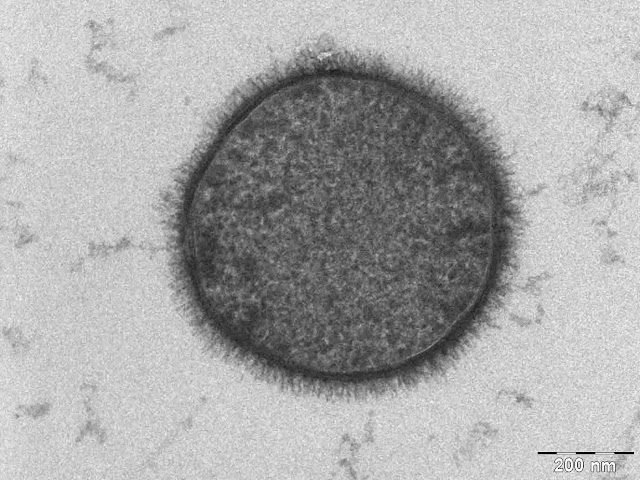Bacillus subtilis taken with a Tecnai T-12 TEM. Image: By Allonweiner Public Domain, https://commons.wikimedia.org/w/index.php?curid=4487608
Soil bacteria, like Bacillus subtilis, have internal clocks that synchronize their activities with the 24-hour cycles of day and night on Earth. New research from the John Innes Centre shows how complex and sophisticated these bacterial molecular metronomes are.
Circadian clocks are internal oscillators that trigger organisms to adapt their physiology and metabolism to 24 hour changes in the environment, such as the changes in light and temperature.

The researchers focused on two genes: firstly, a gene called ytvA which encodes a blue light photoreceptor and secondly an enzyme called KinC that is involved in inducing formation of biofilms and spores in the bacterium.
The pattern of ytvA levels were adjusted to the light and dark cycle, with levels increasing during the dark and decreasing in the light. A cycle was still observed in constant darkness.
This work will could aid precision timing of the use of antibiotics and with bioengineering smarter gut and soil microbiomes. Since Bacillus subtilis is a beneficial soil bacterium, used by farmers to assist nutrient exchange, plant development and defence against pathogenic microbes, the outcome will also be of importance to agriculture.
The circadian clock in Bacillus subtilis regulates several genes and a range of different behaviours. To demonstrate this, the scientists used a technique which inserts an enzyme called luciferase that produces light when a gene is expressed. This bioluminescence guided the team in monitoring the bacterial clock as conditions varied.
The bacteria can synchronize their physiology and metabolism to different times of the day as light and temperature conditions change. From this, Bacillus subtilis should serve as a model organism for the study of circadian clocks in bacteria.
The next steps are to work out which genes are operating to make up the clock mechanism.
See:

Francesca Sartor, Xinming Xu, Tanja Popp, Antony N. Dodd, Ákos T. Kovács, Martha Merrow. The circadian clock of the bacterium B. subtilis evokes properties of complex, multicellular circadian systems. Science Advances
Posted by Dr. Tim Sandle, Pharmaceutical Microbiology Resources (http://www.pharmamicroresources.com/)



No comments:
Post a Comment
Pharmaceutical Microbiology Resources